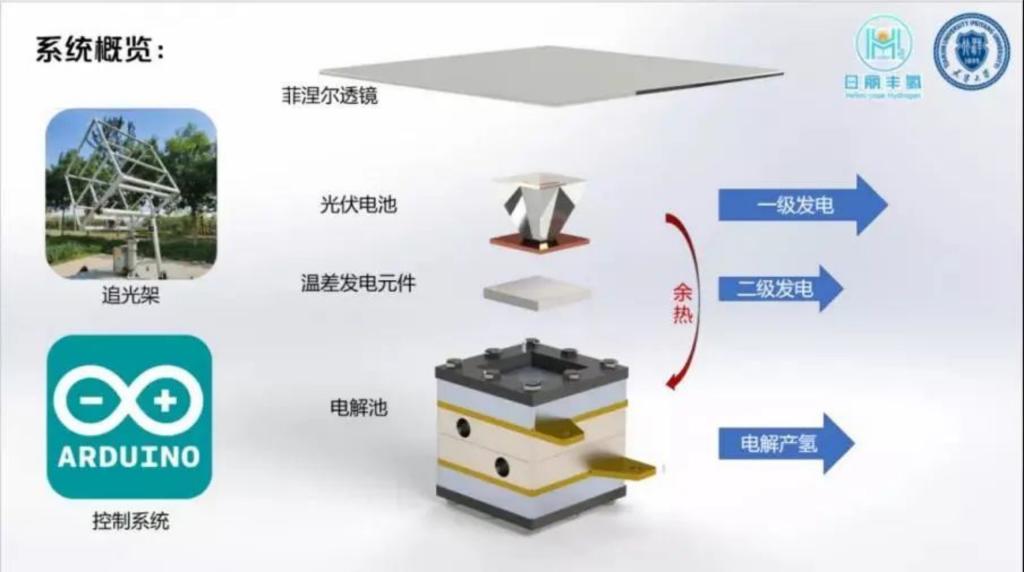A team of seven undergraduates from Tianjin University invented a hydrogen production unit using photovoltaic and PEMEC and won the grand prize at the finals of the 14th National University Student Social Practice and Science Contest on Energy Saving & Emission Reduction at the end of August.
Their work innovatively combines the power generation equipment and electrolysis equipment to achieve the gradient utilization of energy, which not only greatly improves the efficiency of hydrogen production, but also realizes carbon-free green hydrogen production in the whole process.

To reshape the energy system and structure by technology advancement is of great importance to the national goal of carbon emission peaking and carbon neutrality. Hydrogen industry has been included in the 14th Five-Year Plan. But the current method of fossil fuel-based hydrogen production has serious carbon emissions, and the efficiency of solar electrolytic hydrogen making technology, which has the potential to replace the current method, is also low.
The existing emerging hydrogen making method basically uses photovoltaic arrays to generate electricity and then distributes the electricity to the electrolysis cell to produce hydrogen. The photovoltaic power generation equipment and the electrolysis equipment are independent, which causes the great losses of light and heat, leading to high cost and low production efficiency.
To address this problem, the team combined the power generation unit with the electrolysis unit, making use of the full spectrum solar energy. In doing so, in addition to photovoltaic for electrolysis, waste heat is also introduced into the electrolytic cell to raise the temperature of the pool water, and then the secondary power generation is realized through the thermoelectric plate to realize the cascade utilization of energy. The hot water after the electrolysis can be recycled, greatly increasing the energy synthesis efficiency. This system is highly effective and novel.
"If this work can be utilized in the photovoltaic power industry, it can play a role in energy storage and reducing the light rejection rate. The by-products of hydrogen production include high-purity oxygen and hot water, which can be used in manufacturing, processing and fuel industries," said Su Shangchuan, the team leader, adding that the technology is suitable for a variety of scenarios such as hydrogen refuelling stations and car parks. The work is currently under patent application.
It is reported that themed on "energy conservation, emission reduction and green energy", the National University Student Social Practice and Science Contest on Energy Saving & Emission Reduction is an important platform to promote the cultivation of innovative and entrepreneurial talents in universities. TJU’s team consists of seven undergraduate students, including Su Shangchun, Huang Zhixin, Chen Keyi, Zong Ran, Ou Wennan, Zhong Yuzhao and Zhang Jiaqi, from the School of Mechanical Engineering, School of Materials Science and Engineering, and School of Chemical Engineering and Technology. The team was supervised by two professors, Li Wenjia and Zhao Jun from the School of Mechanical Engineering.
By Wu Mengqi
Editor: Eva Yin






